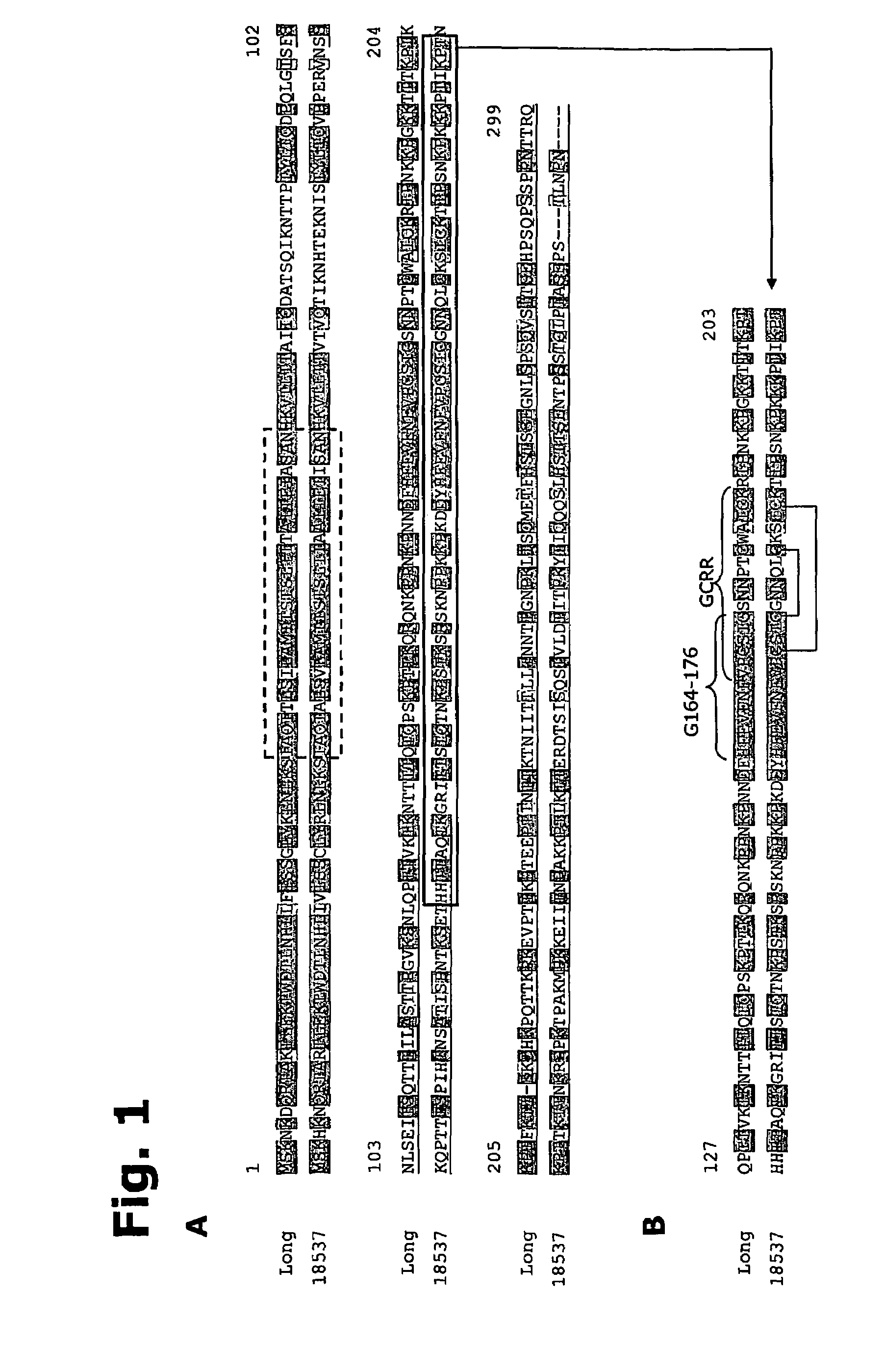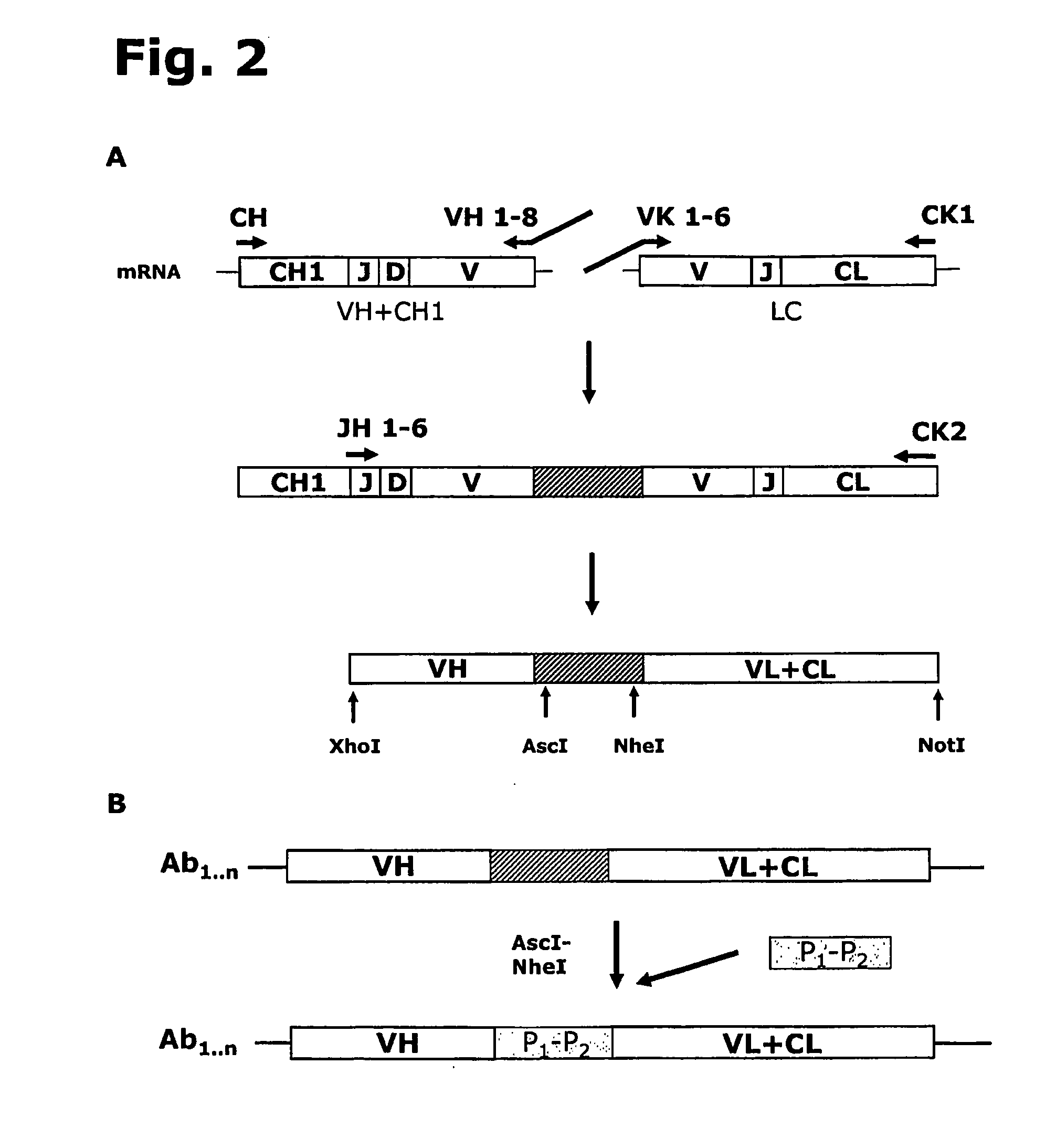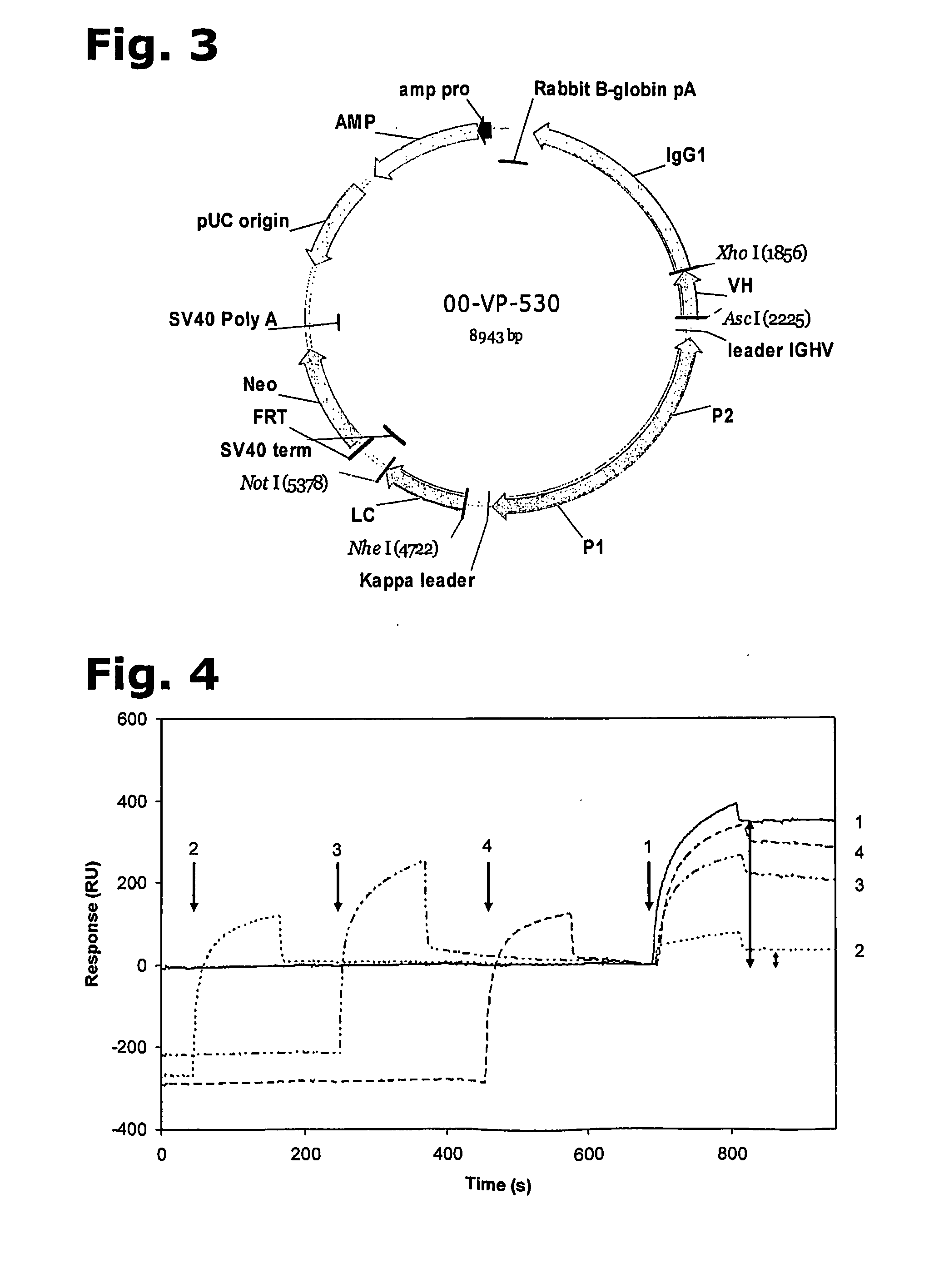Recombinant polyclonal antibody for treatment of respiratory syncytial virus infections
a technology antibody, which is applied in the field of recombinant polyclonal antibody for the treatment of respiratory syncytial virus infections, can solve the problems of large volume of injection, risk of viral disease transmission from serum-derived immunoglobulin products, and difficulty in children with limited venous access
- Summary
- Abstract
- Description
- Claims
- Application Information
AI Technical Summary
Benefits of technology
Problems solved by technology
Method used
Image
Examples
example 1
[0119]This example is a collection of the methods applied to illustrate the present invention.
[0120]a. Sorting of Lambda-Negative Plasma Blasts from Donor Blood
[0121]The peripheral blood mononuclear cells (PBMC) were isolated from blood drawn from donors using Lymphoprep (Axis Shield) and gradient centrifugation according to the manufacturer's instructions. The isolated PBMC were either cryopreserved in FCS; 10% DMSO at −150° C. or used directly. The B cell fraction was labeled with anti-CD19 antibody and isolated from the PBMC fraction using magnetic cell sorting (MACS). The PBMC (1×106 cells) were incubated with anti-CD19-FITC conjugated antibody (BD Pharmingen) for 20 min at 4° C. Cells were washed twice in, and re-suspended in MACS buffer (Miltenyi Biotec). Anti-FITC MicroBeads (Miltenyi Biotec) were mixed with the labeled cells and incubated for 15 min at 4° C. The washing procedure was repeated before the cell-bead suspension was applied to a LS MACS column (Miltenyi Biotec). ...
example 2
[0226]In the present Example the isolation, screening, selection and banking of clones containing cognate VH and VL pairs expressed as full-length antibodies with anti-RSV specificity was illustrated.
Donors
[0227]A total of 89 donors were recruited among the employees and parents of the children who were hospitalized at the Department of Paediatrics at Hvidovre Hospital (Denmark) during the RSV season. A initial blood sample of 18 ml was drawn, CD19+ B cells were purified (Example 1, Section a) and screened for the presence of anti-RSV antibodies using ELISpot (Example 1, Section b) and the frequency of plasma cells was determined by FACS analysis.
[0228]Eleven donors were found positive in the screening of the initial blood samples and a second blood sample of 450 ml was collected from ten of these. The plasma blasts were single-cell sorted according to Example 1, Section a. ELISpot was performed on a fraction of the CD19 positive B cells.
[0229]Four donors with ELISpot frequencies in...
example 3
[0256]In vitro neutralization experiments have been performed both with single antibody clones and with combinations of purified antibodies. All the antibody mixtures described below are constituted of a number of individual anti-RSV antibodies of the present invention, which were combined into a mixture using equal amounts of the different antibodies.
Testing of Single Antibodies
[0257]Initially, the neutralizing activity of each antibody was determined in the PRNT in the presence of complement against RSV subtype A and B strains as described above in Example 1, section j-2. The EC50 values of a number of the purified antibodies are shown in Table 7. Interestingly, while most anti-F antibodies individually exhibited virus neutralizing activity, no EC50 values could be determined for the majority of the anti-RSV protein G antibodies, indicating that these antibodies are not capable of neutralizing the vireo individually. Blank fields indicate that the analysis has not been performed y...
PUM
| Property | Measurement | Unit |
|---|---|---|
| body weight | aaaaa | aaaaa |
| body weight | aaaaa | aaaaa |
| body weight | aaaaa | aaaaa |
Abstract
Description
Claims
Application Information
 Login to View More
Login to View More - R&D
- Intellectual Property
- Life Sciences
- Materials
- Tech Scout
- Unparalleled Data Quality
- Higher Quality Content
- 60% Fewer Hallucinations
Browse by: Latest US Patents, China's latest patents, Technical Efficacy Thesaurus, Application Domain, Technology Topic, Popular Technical Reports.
© 2025 PatSnap. All rights reserved.Legal|Privacy policy|Modern Slavery Act Transparency Statement|Sitemap|About US| Contact US: help@patsnap.com



